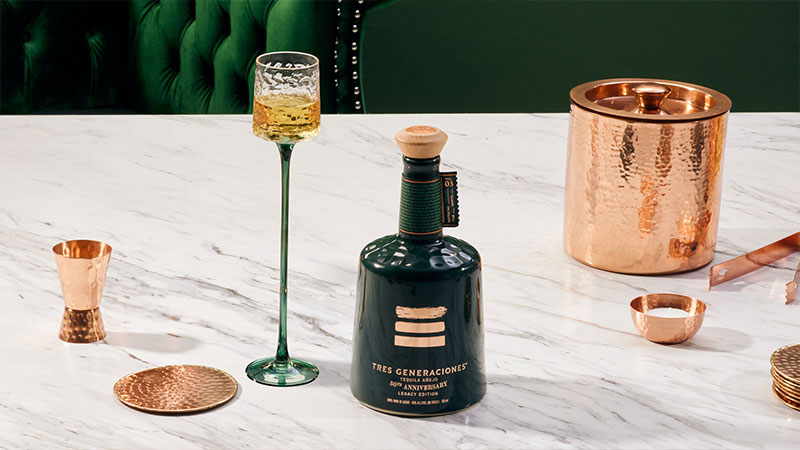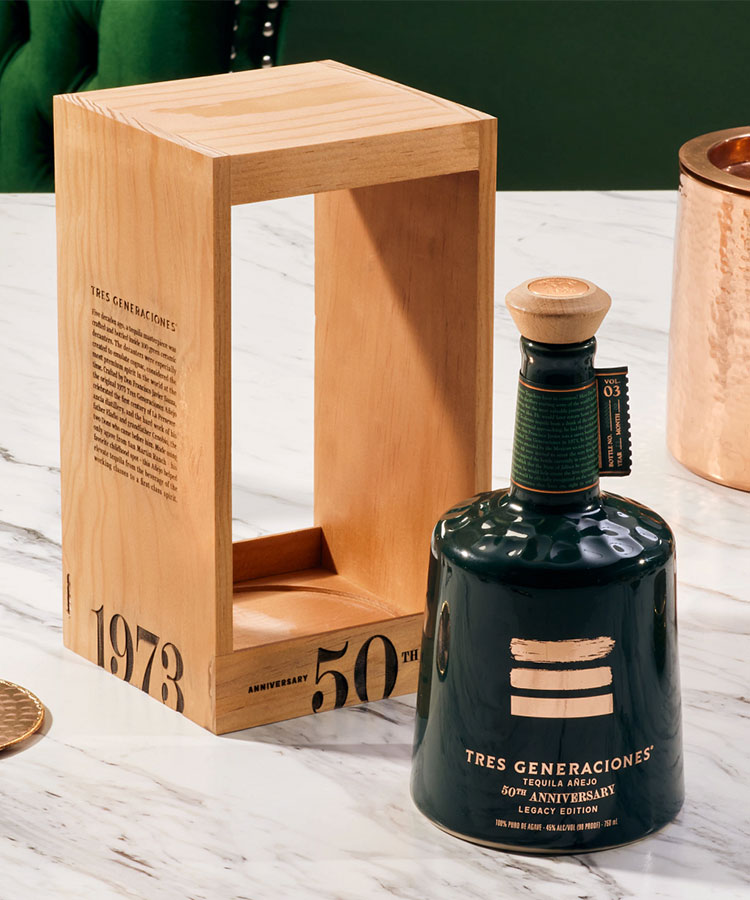
Tracing their tequila-making lineage back exactly 150 years, the Sauza family has a long and fascinating history, one that’s intricately intertwined with the story of tequila itself. The dedication, craftsmanship, and perseverance that helped found the company over a century ago still shine brightly today, as made evident by every drop of premium tequila.
This year marks the 150th anniversary since the founding of Sauza Tequila, and the commemorative 50th anniversary release of a limited-edition Tres Generaciones añejo.
That’s certainly something worth celebrating.
The Story of Three Generations
The founder of Sauza Tequila, Don Cenobio Sauza, established La Perseverancia distillery in 1873. At that time, tequila was celebrated in Mexico but largely absent from the international market. That all changed once Don Cenobio began to hone his craft and mastered the art of tequila making. Once Don Cenobio reached the border between present-day Juárez and El Paso, he sold three casks of tequila he’d carried with him from La Perseverancia — becoming the rumored first exporter of tequila to the United States.
As his tequila business grew, outsiders recognized his success and wanted agave for themselves. Thieves often attempted to loot La Perseverancia’s Blue Weber agave fields; they were surprised to find Don Cenobio patrolling the property with the help of a few hired hands. His reputation for determination, hard work, and personally ensuring the safety of his crop earned Don Cenobio a reputation of being a real tough guy.
After establishing Sauza tequila as a premium brand both nationally within Mexico and internationally in the United States and elsewhere, Don Cenobio’s son, Don Eladio Sauza, took over the operation in 1903. While initially focused on bolstering tequila’s reputation, especially that of his family’s, across international borders, Don Eladio’s focus soon shifted to the domestic stability of Sauza’s operations with the onset of the Mexican Revolution in 1910. The decade-long conflict created political and social instability throughout Mexico, threatening to dismantle the livelihood of the Sauza family through asset seizure and product theft.
The end of the Mexican Revolution in 1920 brought peace back to the nation, and Mexican culture flourished. Don Eladio is credited with helping cement tequila as a national staple of Mexican culture during this time. He led Sauza’s tequila production through the following two and a half decades, at which point his son, Don Francisco Javier Sauza, took charge of the family tradition in 1946.
Don Francisco Javier’s tenure at the helm of Sauza Tequila marked a change in the perception of tequila. Historically, tequila was associated with Mexican farmers, field workers, and the average person. Instead, Don Francisco Javier wanted tequila’s reputation to evolve to be known as a drink for everyone, including refined palates and high-end beverage connoisseurs.
Don Fransisco Javier successfully retold the story of tequila during the post-war period when spirits from war-ravaged Europe were difficult to import to the United States. The mid-20th century saw a massive influx of tequila importation to the United States, and Don Francisco Javier’s leadership helped solidify it as a beverage that was as at home in a five-star hotel’s cocktail program as it was in a domestic poolside Margarita.
Celebrating Three Generations

To celebrate the achievements and hard work of these three distinguished generations of tequila craftsmen and visionaries, in 1973, Sauza Tequila — under Don Fransisco Javier’s leadership — launched a new spirit to do just that. Sauza Tequila unveiled Tres Generaciones, a new and distinctive tequila, at the 100th anniversary of founder Don Cenobio’s creation of the family business. This original batch of Tres Generaciones was packaged in an ornate green ceramic decanter. Only honored guests who attended the 100th-anniversary event were bestowed with these coveted decanters, which are rumored to be the first añejo tequilas ever to be produced.
Now, 50 years since the initial celebration and 150 years since the founding of Sauza Tequila, the creators of Tres Generaciones are releasing the original añejo tequila in a ceramic green decanter. While the initial creation and release of Tres Generaciones 50 years ago was to commemorate a century of Sauza Tequila, this year’s limited release is to celebrate 50 years of Tres Generaciones itself.
The 50-year celebration añejo tequila is bottled in a tastefully updated version of the classic 1973 decanter, and will once again be made of green ceramic featuring distinct 50th anniversary decals. The añejo tequila will follow Don Fransisco Javier’s original recipe.
Tequila’s Presence on the World Stage
Don Fransisco Javier’s creation of Tres Generaciones 50 years ago marked tequila’s rise to permanence in the world of spirits. This 50th anniversary batch of Tres Generaciones demonstrates the continued commitment to craftsmanship, quality, and perseverance the Sauza family has embodied for 150 years. As has always been the case for Sauza Tequila, Tres Generaciones añejo’s production process imbues the spirit with its unmistakable taste.
Tres Generaciones is made from 100 percent Blue Weber agave — the very same type of agave Don Cenobio would personally patrol his plantation to protect 150 years ago. After the agaves are harvested, they are slow roasted in masonry ovens, crushed with traditional tahona wheels made of volcanic rock, and then double-distilled in copper pots. The tequila is then left to mature for 14 months, making it a truly aged tequila.
The result is a deep amber spirit distinct in taste, mouthfeel, and quality. Tres Generaciones añejo tequila has a distinct medium body with hints of sweet vanilla, smoke, and almond. Since it’s so well aged, its finish is long, warm, and pleasant with no burn.
Just 1,900 bottles of this commemorative Tres Generaciones añejo tequila will be released across the country. Such an incredibly limited, extraordinarily unique product is surely something those who love history, craftsmanship, and fine tequila will not want to miss.
This article is sponsored by Tres Generaciones.
